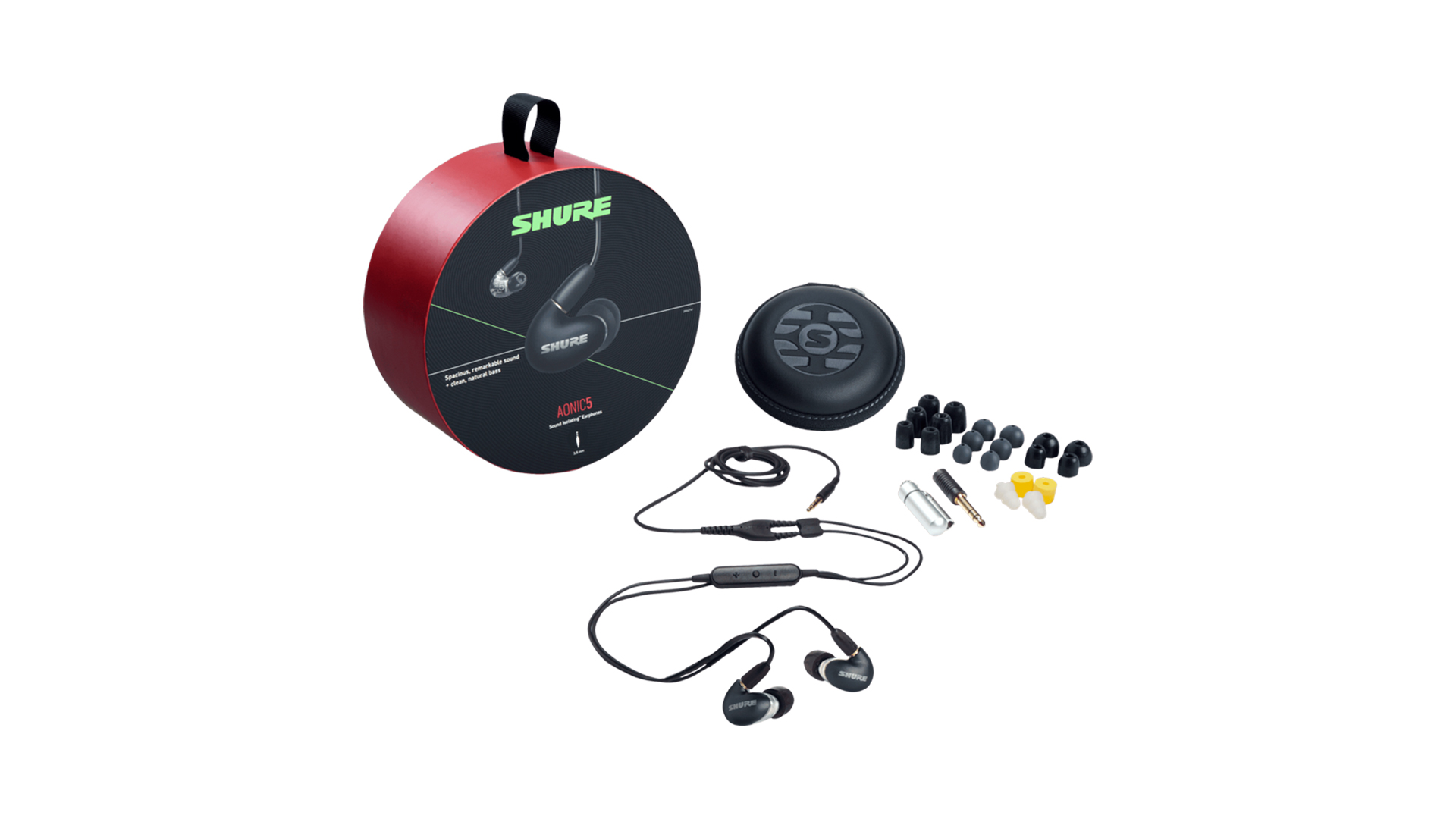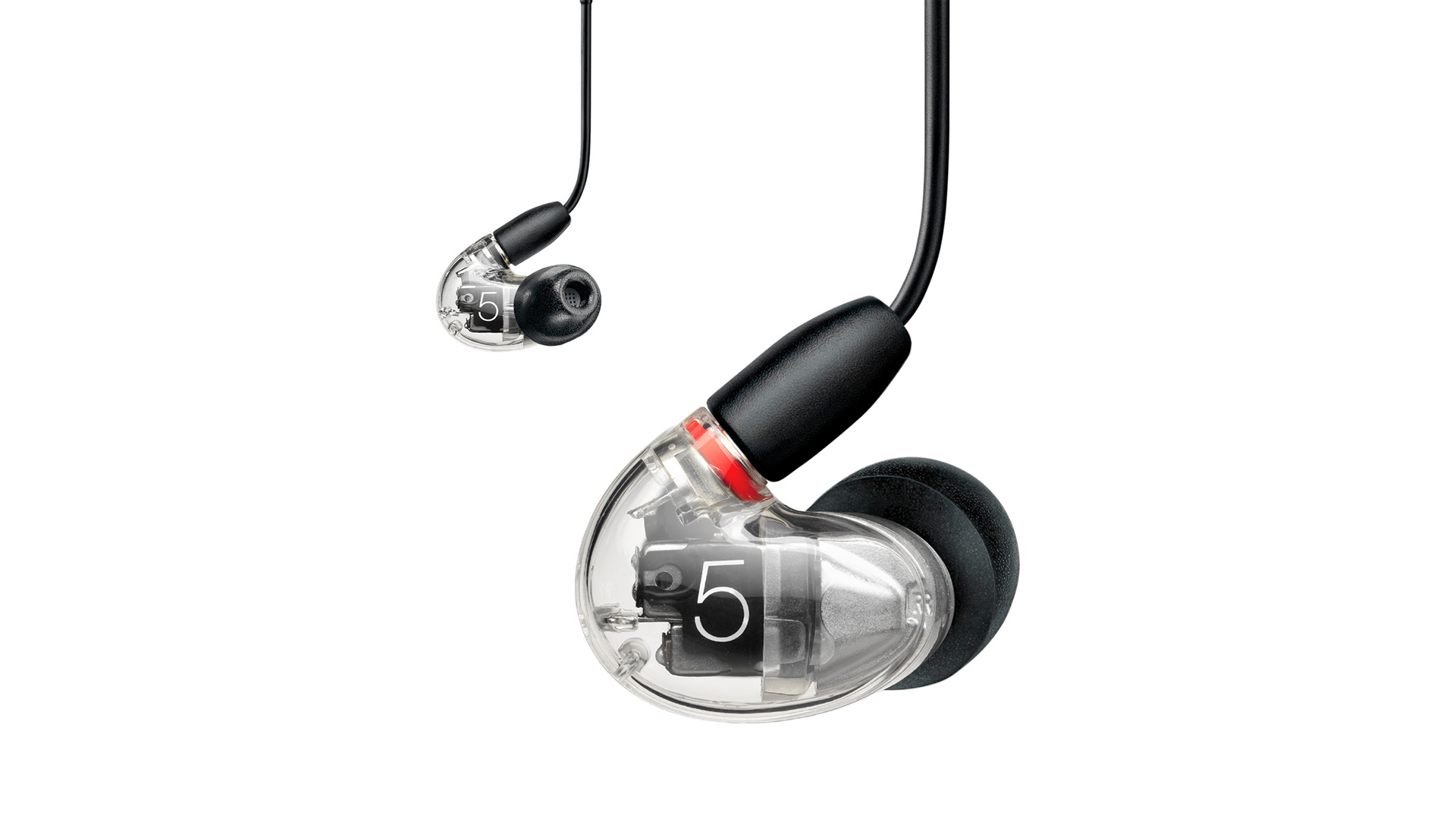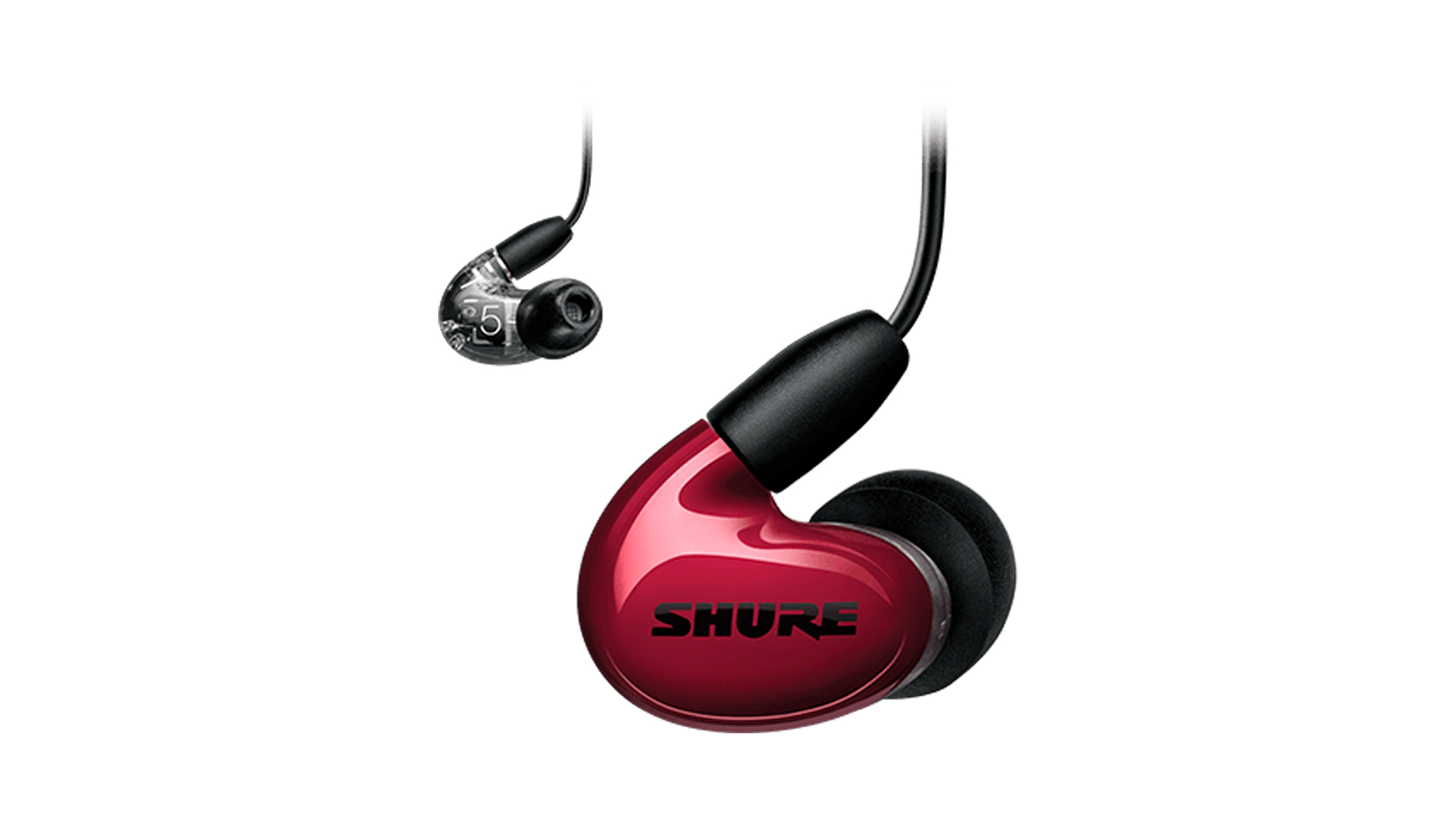What Hi-Fi? Verdict
Shure’s premium in-ear headphones deliver bags of detail and a sensational sense of musicality
Pros
- +
Sophisticated, mature sound
- +
Superb levels of detail
- +
Exceptional sense of timing
Cons
- -
Require suitable content and amplification
- -
Unforgiving of poor recordings
Why you can trust What Hi-Fi?
Wired in-ear headphones are a dying breed, especially at the budget end of the market, but manufacturers with a rich history in this category don’t seem ready to pull the plug just yet, especially when it comes to more premium pairs.
Take Shure, for example. It boasts years of experience in the world of in-ear monitors, and a number of five-star ratings for its audiophile headphones would suggest the company knows a thing or two about making a decent pair. So, can we add the Aonic 5 to that list?
Design and comfort

At £449 ($499, AU$879), these earbuds are the top in-ear model in Shure’s Aonic range. On paper, their design credentials look suitably impressive. The Aonic 5 use three high-definition balanced armature drivers in a dual woofer and single tweeter configuration.
You can actually get a closer look at the inner working of the buds through the clear section of each earpiece. It acts as a window and makes a welcome change to the dull black plastic used to cover the majority of headphones that pass through our test rooms. The Aonic 5 are available in three different finishes – Matte Black, Gloss Red and Crystal Clear.
Each earpiece uses an MMCX connector to attach to the supplied headphone cable. This makes it easy to switch the cable out in favour of Shure’s optional true wireless secure fit adapter (£175, $179, AU$309), which can transform the Aonic 5 into a pair of wireless earbuds.
The headphone cable also includes simple in-line controls for volume and playback and a switch that allows the controls to work with either iOS or Android phones.
Anyone who has seen or used Shure earbuds in the past won’t be shocked to discover that you have to loop the headphone cable over each ear. It takes a bit of practice to make it a smooth process but they do feel very secure in place.
The latest hi-fi, home cinema and tech news, reviews, buying advice and deals, direct to your inbox.
As you’d expect, Shure provides plenty of tips (quite literally!) to help you try and get the perfect seal. You’ve got three different sizes of Comply Professional P-Series memory foam tips, three sizes of more rounded foam tips, three sizes of silicone eartips and one set of flanged tips. We found the isolation to be excellent on the whole (Shure claims that they can block out up to 37dB of noise) and the tips we settled for in the end (the more rounded design) were more than comfortable enough for long listening sessions.

Frequency response 18Hz-19kHz
Sensitivity 119dB
Input 3.5mm
In-line remote control Yes
Weight 24.5g
Finishes x3
But it’s not just the eartips you can experiment with here. Packed up in the sturdy, circular carry case is a small tube that looks like it might contain top-secret government information. It’s actually labelled ‘hardware kit’ and has a slim metal cylinder chained to it.
This hardware kit actually contains two pairs of extra nozzles for the earbuds. These aren’t replacements for the ones currently fitted to the Aonic 5 should one snap or get damaged; each pair can alter the balance of the sound produced by the earbuds. It’s not a new concept and we’ve seen a few manufacturers offer this customisation over the years, but it’s the first time we’ve seen it on a pair of portable Shures.
The Aonic 5 come with the ‘balanced’ nozzles already installed, with ‘warm’ and ‘bright’ nozzles provided in the tube. Want to swap them around? This is where the thin metal cylinder comes in. It’s actually a tool that fits into grooves in the metal collar at the bottom of each nozzle. Once it’s in place, simply unscrew the collar, switch nozzle and screw the collar back into place. There’s a certain knack to getting the tube and collar back in place, but once you’ve picked your preferred nozzles, it’s not something you’ll really need to do again.
Sound

So how do the different nozzles fare, and which would we recommend using?
‘Bright’ does exactly what it says on the tin – but for us, it overcooks things. The emphasis on the top end is quite marked with highs sounding more cutting and less pleasant, in our opinion. The strings and electric guitar in Mac Miller’s Cinderella sound quite brash and the track makes for uncomfortable listening.
While it’s a stark jump from ‘balanced’ to ‘bright’, the extra impact and fullness switching to ‘warm’ are a little easier to live with. The situation doesn’t feel quite as unbalanced and you can hear an increase in weight and substance although it is quite subtle. Bass notes don’t become overbearing, but after to-ing and fro-ing between the trio of tips, we’d still suggest sticking with the balanced nozzles, for the best, er, balance of weight, agility, detail and refinement.
Now, you can use the Shures with a phone (provided it has a headphone jack, of course). However, to really make the most of their unquestionable talents you should really feed them quality audio files from a quality source. Using a laptop and streaming in lossless CD quality? We’d seriously suggest using the Shures with a dedicated external DAC/headphone amp.
A device like the AudioQuest DragonFly Red would be a good starting place. Provided you’ve got the appropriate cable, it’s a DAC that can also be used with iOS or Android devices too.
Because in conjunction with the right source and material, the Shure Aonic 5 sound sensational. There’s a wonderful sense of clarity and they shower the listener with detail. They’re particularly talented with midrange information – vocals sound superb, rich in detail and natural expression. The in-ears do a great job expressing energy in the lead vocals of Don Broco’s How Are You Done With Existing?. As the track progresses, punchy, powerful drum thwacks mix majestically with soaring, razor sharp guitar riffs.
Switch to a spot of drum'n'bass, in the form of Logistics’ Stay True, and the Shures really display a sharp sense of timing. They surf and ride out the track’s elongated bass notes and switch effortlessly from the deep, probing notes to more shallow waves.
There’s enough bass to satisfy but the Aonic 5 also manage to deliver subtlety and detail in spades. The texture and tone of every note are communicated effortlessly to the listener. This level of transparency is a huge asset, but it does also mean the Shures are quick to highlight flaws in recordings. Anything a little rough around the edges will sound exactly that.
Verdict
If you’re not planning on going wireless any time soon and your set-up justifies premium earbuds, you’re not going to be disappointed by the Aonic 5.
The ability to change their sonic balance is a nice option to have, but not vital as we find that their 'standard' sound oozes class and quality and completely invests you in the music you’re listening to. And that’s all you can really ask for, right?
SCORES
- Sound 5
- Comfort 5
- Build 5
MORE:
Read our review of the Shure Aonic 3
Read our round up of the best in-ear headphones: budget to premium
What Hi-Fi?, founded in 1976, is the world's leading independent guide to buying and owning hi-fi and home entertainment products. Our comprehensive tests help you buy the very best for your money, with our advice sections giving you step-by-step information on how to get even more from your music and movies. Everything is tested by our dedicated team of in-house reviewers in our custom-built test rooms in London, Reading and Bath. Our coveted five-star rating and Awards are recognised all over the world as the ultimate seal of approval, so you can buy with absolute confidence.

